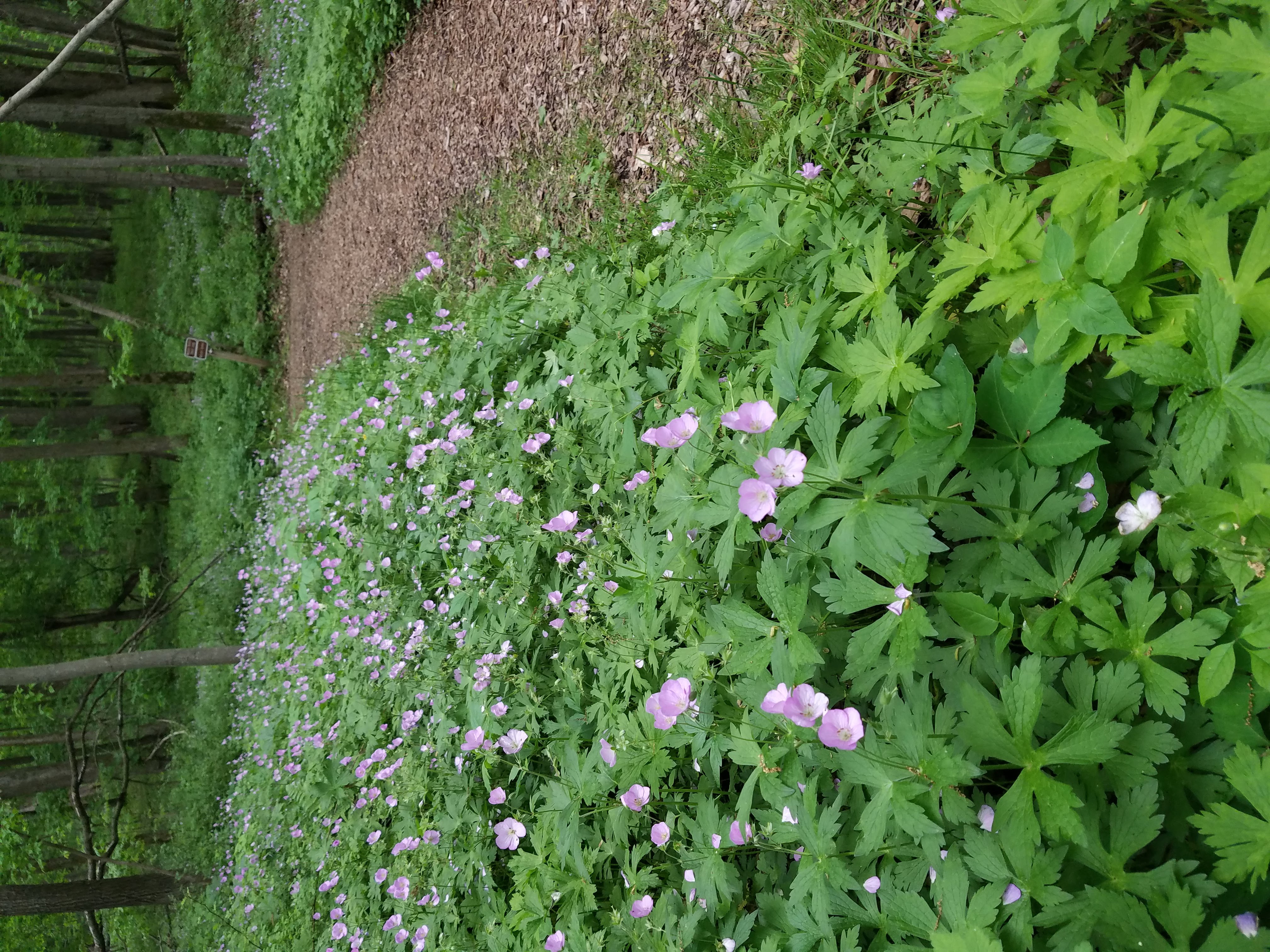
The day began like any other day in May. I finished several projects and decided to take a hike late that afternoon. I drove to Swiss Valley Nature Preserve, although there was a small chance of rain in the forecast. Once I arrived at my destination and I was ready for my hike, I checked the radar. Radar showed light rain heading my way. Even so, I continued my plan to hike on the Mature Forest Trail.
Swiss Valley Nature Preserve is located 4.5 miles southwest of Dubuque, Iowa. Several trails connect to each other. The starting point is at the parking lot at the Swiss Valley Nature Center and Preserve. Find a map of the trails here. Read more about Swiss Valley in my blog 5 Amazing Findings on a Hike at Swiss Valley.
Mature Forest Trail
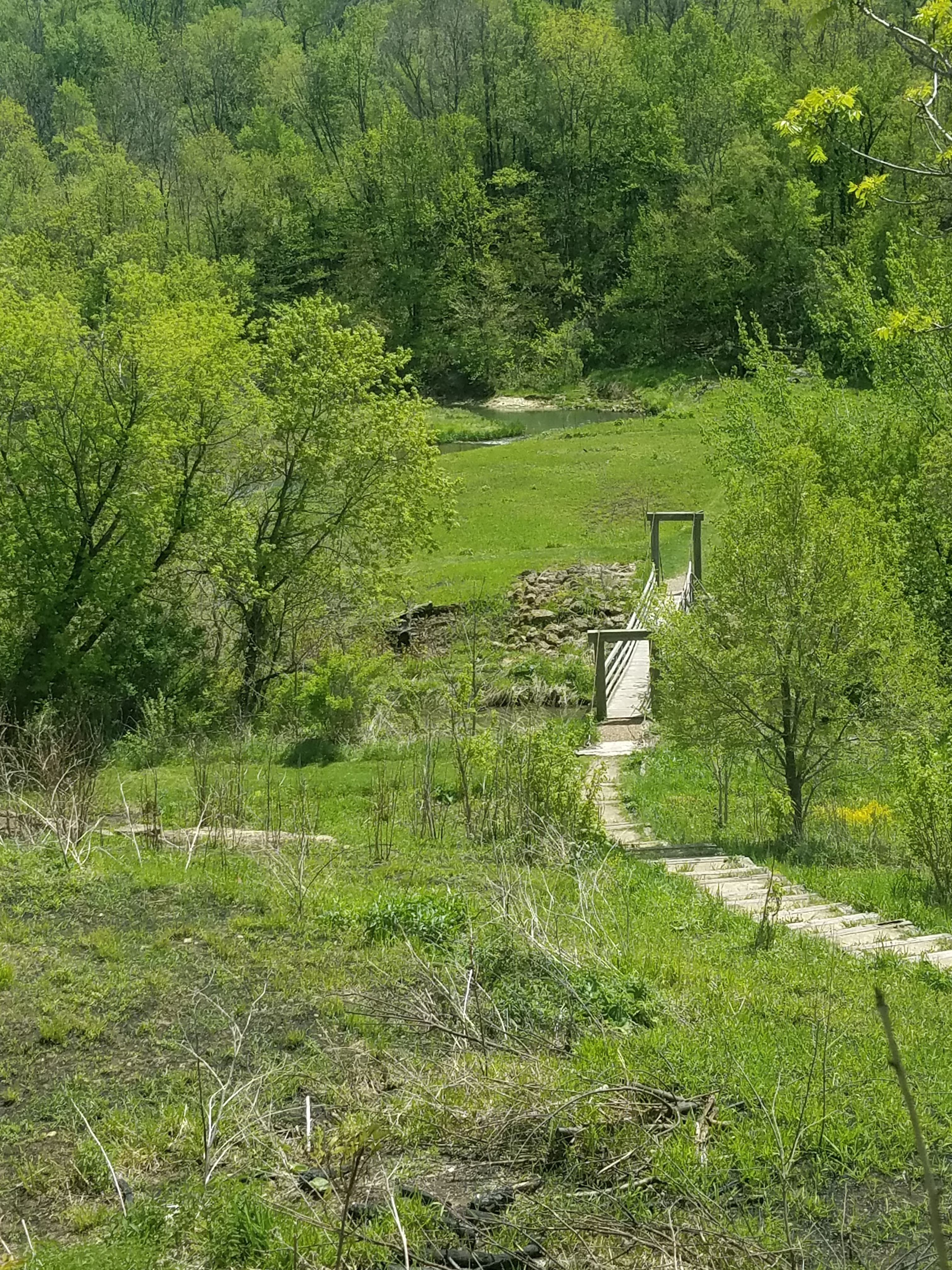
The steps down to the valley and the hanging bridge seemed a bit wet, but they weren’t slippery. I approached the hanging bridge that goes over Catfish Creek. It creaked as I crossed it. This is a normal sound for these type of bridges. This hanging bridge is one of three such bridges in the preserve.
I turned right at the intersection with the Ridge Trail and continued to hike on the Mature Forest Long Loop. After climbing the steps, the trail goes through the middle of the hill. I was amazed at the sight ahead of me. To my wonderous eyes, I saw what looked like a sea of lavender flowers covering the forest floor. Wild geraniums bloomed all around me. What a glorious sight!
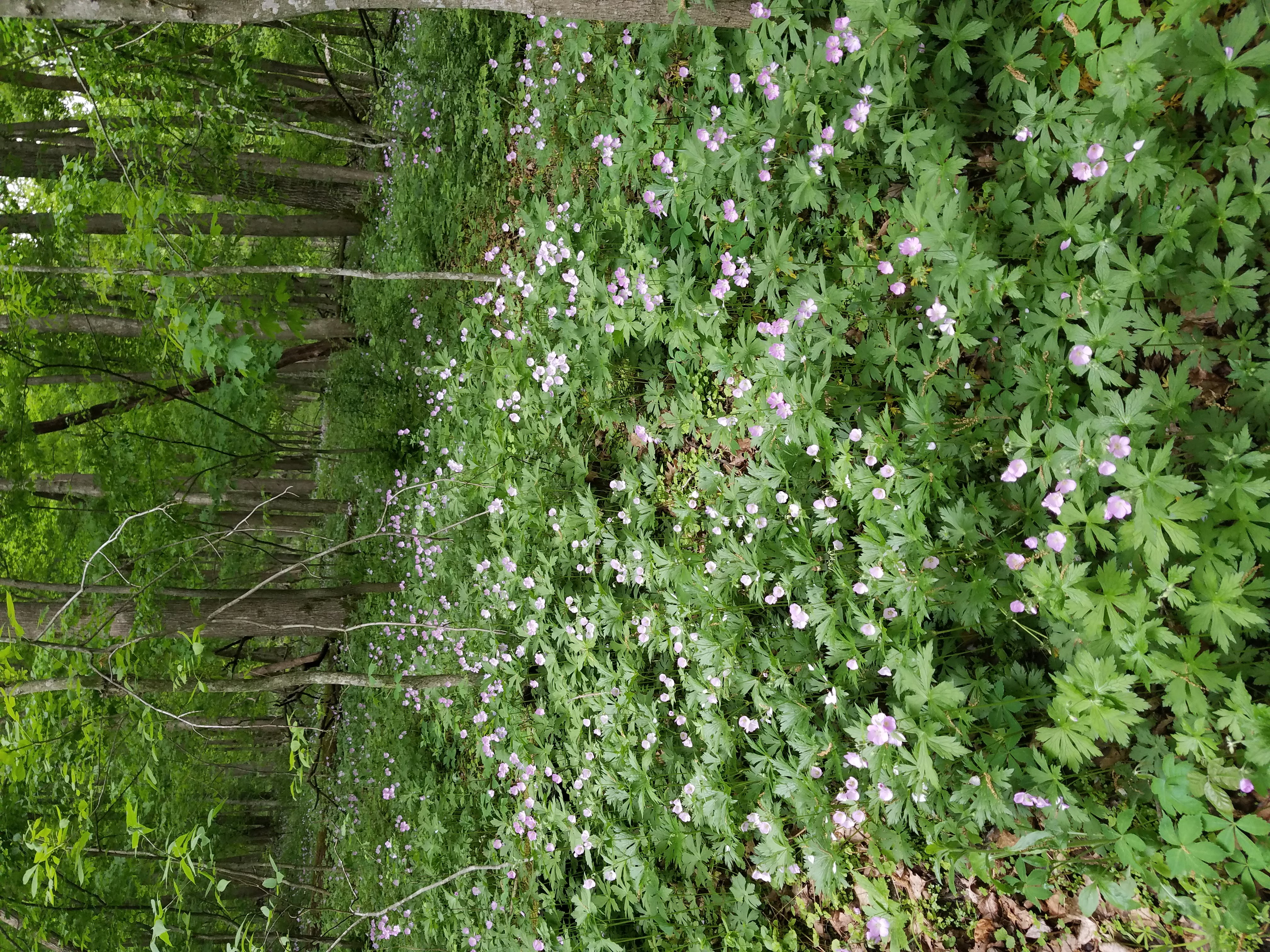
My plan was to hike and get back quickly to my car before the rain started. However, I changed this thought when I saw how beautiful the hill looked; I wanted to admire the beauty of this amazing scene for a few moments. I grabbed my phone and took several photos. A bench stood nearby so I sat for a moment. While there, I decided to write about this gorgeous hike.
Wild Geraniums
I consulted my wild flower guides later that day. I learned that wild geraniums come in a variety of colors, ranging from white, yellow and lavender. Wild geraniums have five petals with prominent veins in them and a yellow eye in the middle. The flowers are 1 to 1 1/2 inches wide while the plant grows 12 to 18 inches tall. The leaves contain 5 – 9 lobes. The lobes start at one spot from the base of the hairy stem of the plant.
Wild geranium leaves turn red and orange in autumn, and they are deer-resistant due to their fragrance. They thrive in medium to well-drained soil and love shady areas. Thus, wild geraniums are abundant in a wooded area. This plant is an herb with several uses, such as for tea and cake.
Continuing on the Mature Forest Trail
Continuing the journey on the Mature Forest Trail, I turned left to hike up the hill when I reached the next intersection. At this point, wild geraniums were still in bloom, but there were less of them than in the deeper forest. This part of the Mature Forest Trail was wet from previous rains, although, it was not muddy. Woodchips on the trail prevented mud from forming. Thus, a small stream could easily be crossed without getting my hiking shoes full of mud.
Soon, I reached the intersection with Ridge Trail and turned right to hike down the hill. At the next intersection, the abandoned schoolhouse stood. I immediately turned left to follow Stream Bottom Trail.
Stream Bottom Trail
Stream Bottom Trail follows Catfish Creek and loops around both sides of the creek. Once I reached the hanging bridge, one choice was to continue on the same side of the creek on the long loop of Stream Bottom Trail. This trail would take me farther west. Instead, I chose to cross the hanging bridge, since it looked like it could rain soon and hike back towards the parking lot.
While crossing the hanging bridge, I saw two ducks and several ducklings swimming in the distance in Catfish Creek. Several feet later, I crossed another bridge, which crosses a stream that flows into Catfish Creek. I glanced for several minutes at the stream. The sound of the rippling water and the bright yellow flowers mesmerized me. The flowers, pictured in the video below, are a mustard plant.
Listen to the peaceful sound of the shallow water flowing over the rocks in a stream near the hanging bridge. This was taken before it flows into Catfish Creek.
While watching and listening to the sound of the flowing stream, I heard a barred owl hoot in the distance. This made my day! For some reason, the sound of owls hooting brings a smile to my face. There is something astounding about the owl’s hoot.
Barred Owl
I researched barred owls to learn more about them on owlpages.com. Barred Owls live in mature forests often near water. They roost during the day while at night, these nocturnal birds hunt. Their diet consists of rabbits, squirrels, mice, birds, chipmunks, amphibians, reptiles and other species. They are most active at night. The only natural enemy of the barred owl is the great horned owl, which is larger than the barred owl.
The hooting call of the barred owl sounds like “hoo, hoo, too-HOO, hoo, hoo, too-HOO, ooo” An additional way of putting it is “Who cooks for you? Who cooks for you-all?” A barred owl’s hoot can be heard in the daytime as well as at night.
The name “barred owl” comes from the horizontal bars on the owl’s chest and the vertical bars on the abdomen. A pair of barred owls mates for life. The “couple” builds their nest in the cavities of a tree. The nests usually are well-hidden. They lay between 2 and 4 eggs, which are white and rounded. The parent owls care for their young for at least four months. Barred owls do not migrate; instead, they stay in the same area for most of their life.
Short, Relaxing Break
I spotted a bench ahead of me so I exited the bridge and rested briefly. I had some “ants on a log” celery treats with me that I made earlier. Celery pieces had been filled with peanut butter (the logs) with a few raisins on top to represent the ants.
Normally I would have stayed a lot longer on the bench to watch the natural surroundings, but I knew I needed to cut the break short. While there, I saw a male and female goldfinch pair. The male’s bright yellow color stood out as they flew past me. I also heard the owl hoot again.
It was time to continue. I made a left turn onto the Bobcat Hollow Trail and proceeded to hike to the intersection with the Woodland Ecology Trail, where I turned right onto that trail and started to climb up the hill.
Woodland Ecology Trail
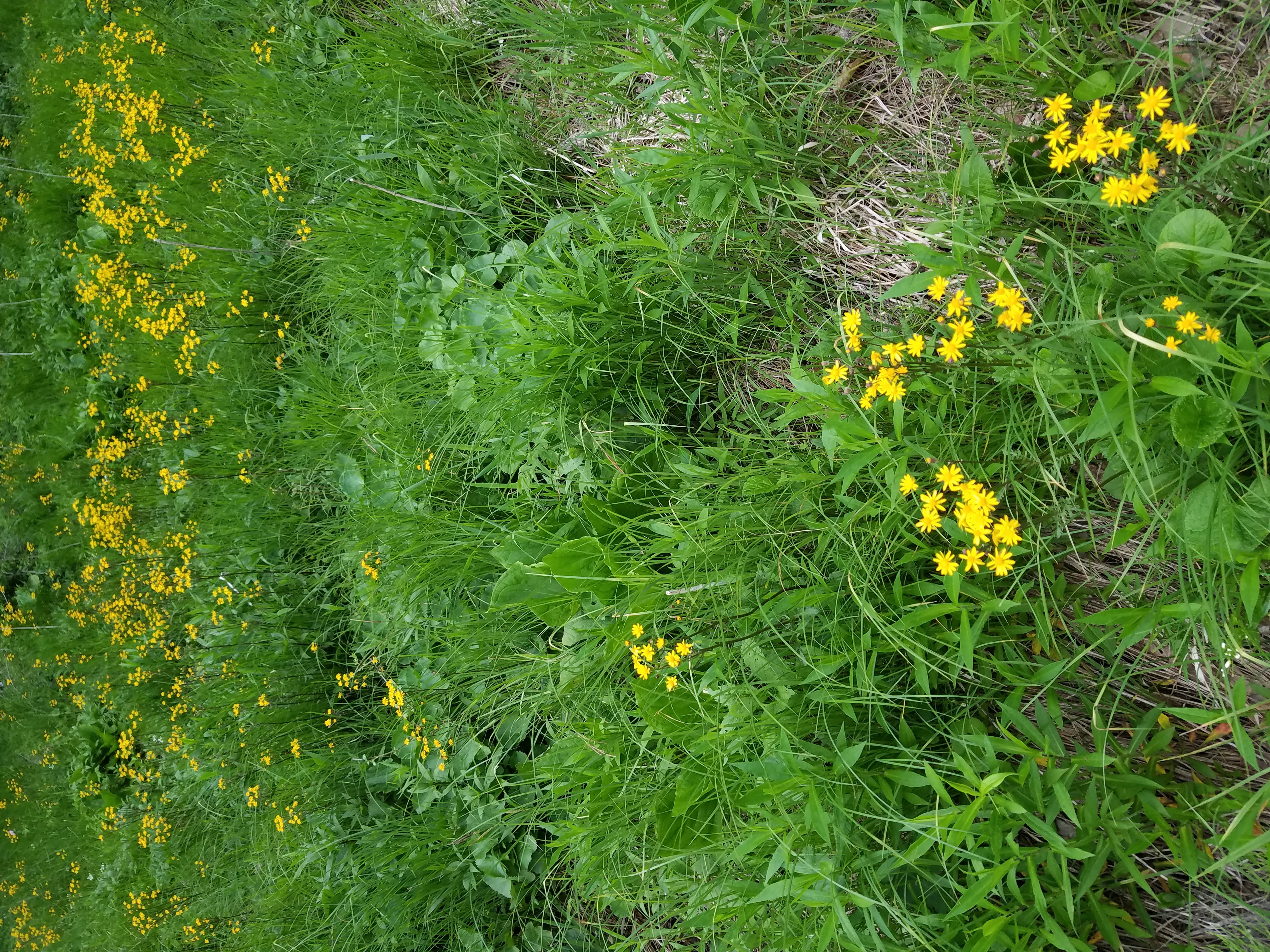
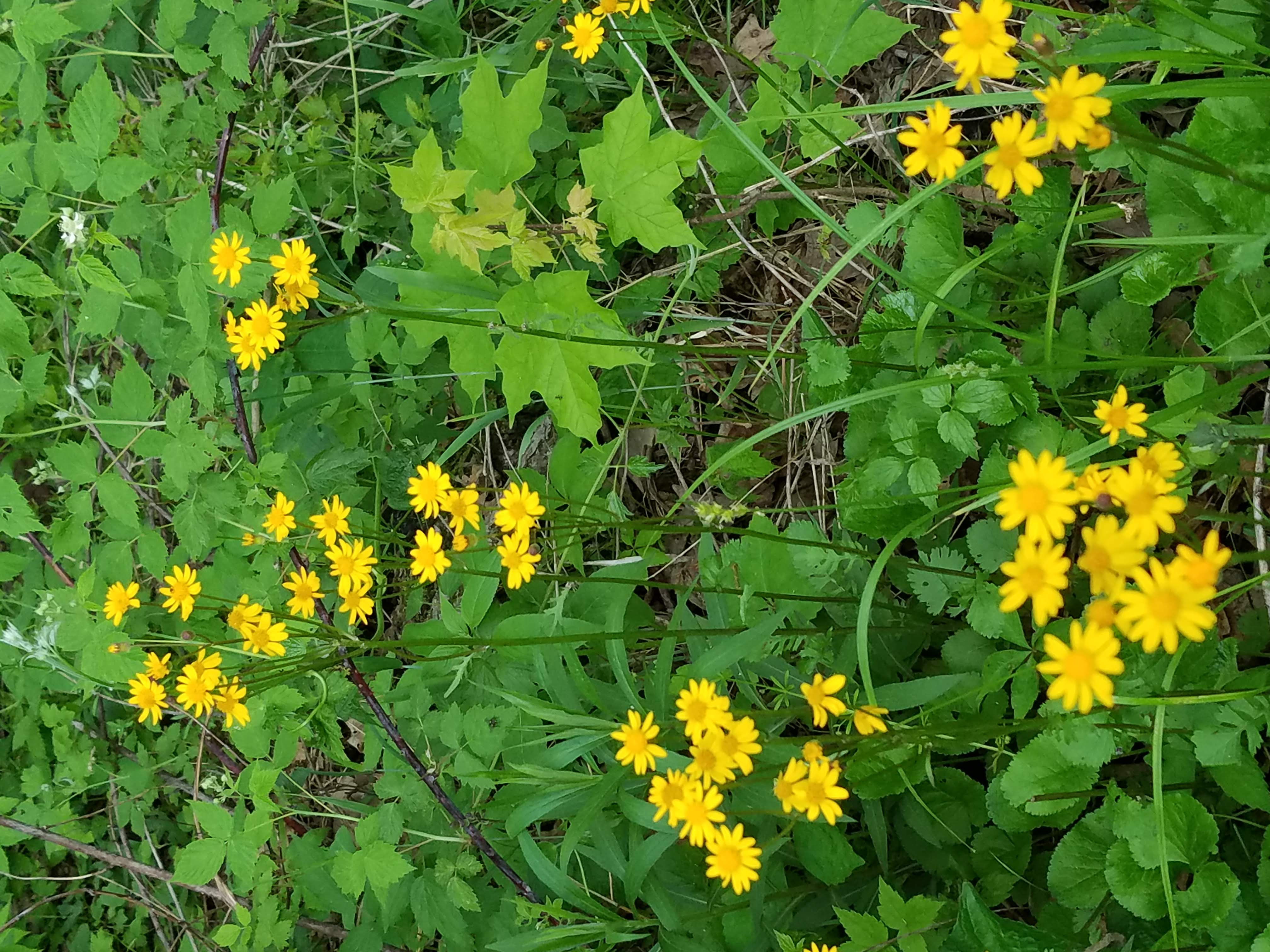
After climbing up the hill, I decided to hike the short distance to the hanging bog to see what changes occurred since I was last there. To my delight, I saw yellow flowers in the bog. These flowers, different from those seen a month earlier, resembled a tiny daisy except that these 1/2 inch flowers were smaller than a daisy. The bright yellow petals had a golden center growing on a 1 to 2 foot stem with heart-shaped leaves closer to the ground. Later, after correspondence with Megan, a naturalist at Swiss Valley Nature Center, I identified these flowers as golden ragwort.
While approaching the boardwalk, a deer quickly turned and ran when she saw me. She stopped to see what I was doing as I stepped onto the boardwalk but soon disappeared. I snapped a few photos before I turned around to continue the hike back to the parking lot.
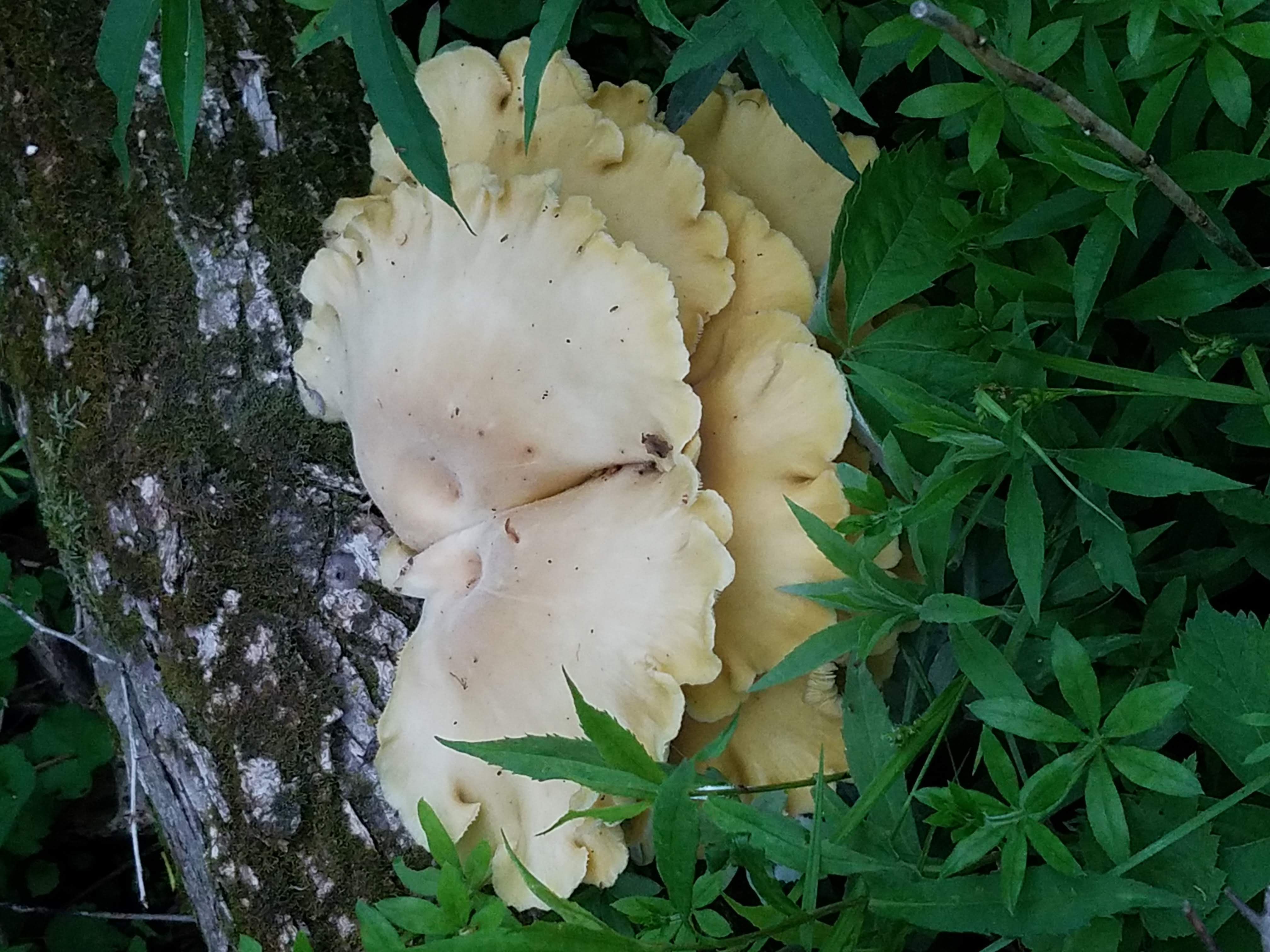
Hike Back to the Parking Lot
Just then, I noticed the western sky looked darker. I thought, “Time to pick up the pace.” I made a left turn at the next intersection and hiked back to the parking lot on the Woodland Ecology Trail. Naturally, I spotted another beautiful phenomenon. A huge off-white colored fungus grew at the bottom of a dead tree. It was large, about a foot wide, and beautiful. The fungus appeared to be an oyster mushroom. I took a photo and glanced behind me to the western sky. The dark clouds were getting closer. This wasn’t the time to observe anything closely. Time to move on!
I reached the intersection with the upper loop of this trail and carefully hiked down the hill to the bottom trail. I had three bridges left to cross. Near the last bridge, I spotted a large backhoe. This made me wonder what work would soon be done at the preserve.
Final Thoughts
Finally, I reached the parking lot. It started to sprinkle as I approached my car. What a great hour and a half hike this was! I loved the fact that I spotted some beautiful flowers, a carpet of lavender wild geraniums as well as yellow ragwort. The vibrant colors enhanced my experience on the trails. As always, this hike felt like a retreat. I was alone with God as I observed the beauty that surrounded me while I discovered new blooming flowers. I’m thankful that nature preserves such as Swiss Valley Nature Preserve are available to us so we have the opportunity to observe the natural beauty that surrounds us.

Enjoyed reading this again. Since I am familiar with the area it was almost like I was there as you described it and of course I love the photos!